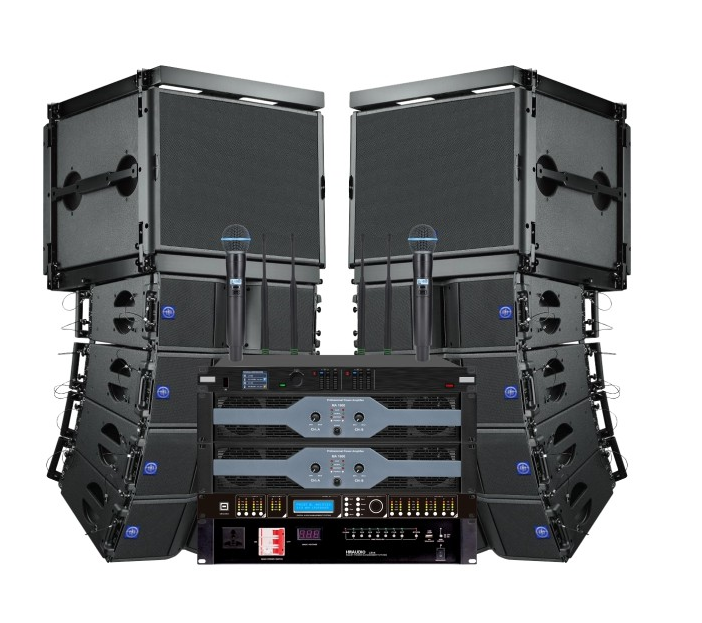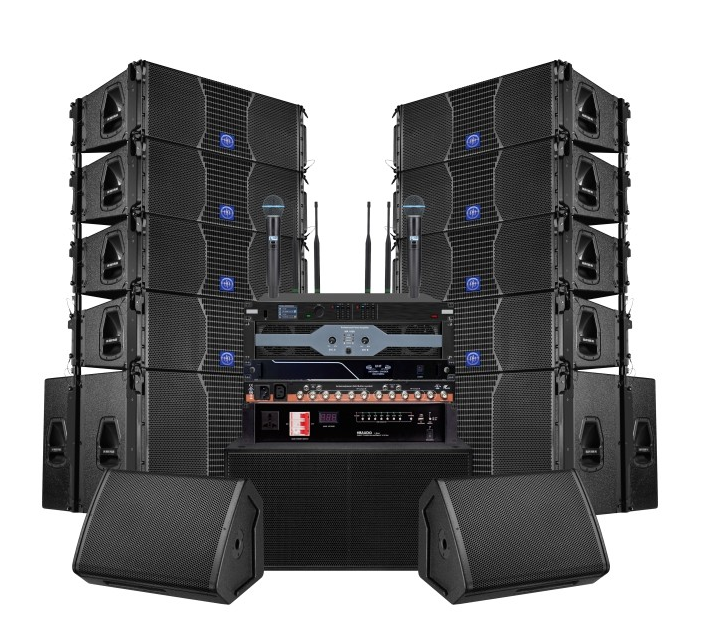Understanding Professional Audio Systems for Business Environments
A well-designed PA sound system forms the backbone of effective audio communication in any business setting. Whether you're operating a retail store, managing a corporate office, or running an entertainment venue, the right audio solution can significantly impact your operational efficiency and customer experience. Today's PA sound systems offer sophisticated features that go far beyond simple voice amplification, making the selection process both exciting and complex.
Modern businesses rely heavily on clear audio distribution for various purposes, from making announcements and playing background music to hosting events and ensuring emergency communications. The key lies in selecting a PA sound system that not only meets your current requirements but also accommodates future growth and technological advancements.
Essential Components of Commercial PA Systems
Core Audio Equipment and Hardware
At the heart of every PA sound system lies several crucial components that work together seamlessly. The main amplifier serves as the powerhouse, processing and boosting audio signals before they reach the speakers. High-quality speakers, strategically positioned throughout the space, ensure uniform sound coverage. Mixing consoles allow for precise control over multiple audio sources, while microphones enable clear voice transmission.
Modern systems also incorporate digital signal processors (DSP) that optimize sound quality by eliminating feedback, controlling echo, and adjusting equalization automatically. These components must be carefully selected based on your specific venue size and acoustic characteristics.
Control and Distribution Networks
The control infrastructure of a PA sound system determines its ease of use and flexibility. Zone controllers enable different audio levels and content in various areas of your business. Network connectivity options allow for remote management and integration with other building systems. Advanced systems may include automated scheduling features for predetermined announcements or music playlists.
Professional installation ensures proper cable routing, equipment mounting, and system configuration. This attention to detail prevents common issues like interference, ground loops, and coverage dead spots that could compromise system performance.
Venue-Specific Considerations
Indoor Environment Requirements
Indoor spaces present unique acoustical challenges that directly influence PA sound system design. Factors like ceiling height, room dimensions, and surface materials affect sound reflection and absorption. Retail environments typically need even coverage for background music and clear announcements, while conference rooms require focused audio delivery for presentations and video conferences.
The system must account for ambient noise levels, which vary throughout the day. Advanced acoustic modeling helps determine optimal speaker placement and power requirements to maintain intelligible audio under different conditions.
Outdoor Installation Demands
Outdoor PA sound system installations face additional challenges from weather exposure and larger coverage areas. Weather-resistant speakers and equipment enclosures become essential for system longevity. Sound propagation in open spaces requires careful consideration of speaker directionality and power output to achieve adequate coverage without causing noise pollution.
Environmental factors like wind, temperature variations, and humidity can affect sound quality and equipment performance. Professional system designers account for these variables when specifying outdoor audio solutions.

Technical Specifications and Performance Metrics
Audio Quality Parameters
Sound quality in a PA sound system is measured through several technical parameters. Frequency response indicates the system's ability to reproduce different sound frequencies accurately. Signal-to-noise ratio measures the clarity of the audio signal compared to background noise. Total harmonic distortion affects the faithfulness of sound reproduction, particularly important for music playback.
Understanding these specifications helps in comparing different systems and ensuring they meet professional standards for your intended application. Regular maintenance and calibration preserve these performance characteristics over time.
Power and Coverage Calculations
Proper power sizing ensures your PA sound system delivers adequate volume without distortion. Calculate power requirements based on room dimensions, desired sound pressure levels, and speaker efficiency ratings. Factor in headroom for peak demands and future expansion needs.
Coverage patterns must be analyzed to eliminate dead spots and maintain consistent sound levels throughout the space. This may require multiple speaker zones with independent volume controls for optimal results.
Integration and Scalability Features
Building Management System Compatibility
Modern PA sound system installations often integrate with broader building management systems. This allows coordinated operation with security systems, fire alarms, and automated building controls. Network connectivity enables remote monitoring and management through central control platforms.
Consider future integration requirements when selecting system components. Open standards and protocols facilitate easier integration with both current and future technologies.
Expansion and Upgrade Paths
Business growth often necessitates audio system expansion. Choose a PA sound system architecture that accommodates additional zones, speakers, and features without requiring complete replacement. Modular designs allow for gradual upgrades and technology updates while protecting your initial investment.
Digital systems offer greater flexibility for future enhancements through software updates and added functionality. Plan for adequate infrastructure capacity to support potential system growth.
Frequently Asked Questions
What maintenance does a PA sound system require?
Regular maintenance includes checking connections, cleaning components, testing sound quality, and updating system firmware. Professional inspection annually helps identify potential issues before they affect performance. Keep detailed records of maintenance activities and system adjustments for reference.
How long should a commercial PA system last?
With proper maintenance and quality components, a professional PA sound system typically lasts 8-12 years. Individual components may need replacement earlier based on usage patterns and environmental conditions. Regular updates and upgrades can extend system lifespan while maintaining modern capabilities.
Can existing speakers be used with a new system?
While it's possible to integrate existing speakers with a new PA sound system, careful evaluation of compatibility and performance is essential. Impedance matching, power handling capacity, and frequency response must align with new components. Professional assessment helps determine whether reusing equipment is cost-effective.

